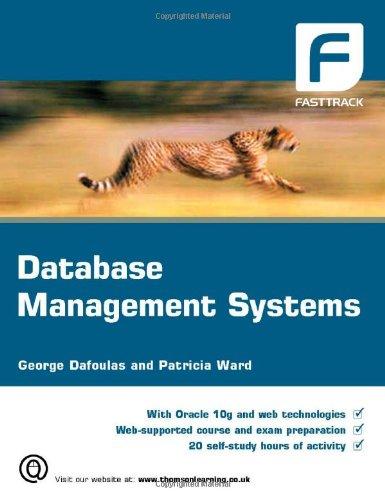Question
A manufacturing facility has a repair shop with two repairmen who repair failed machines on a first-fail-first-serve basis. They work together on the machine if

A manufacturing facility has a repair shop with two repairmen who repair failed machines on a first-fail-first-serve basis. They work together on the machine if there is one machine down (the repair still takes the same amount of time), and otherwise, each works on a separate machine. Thus, if there are more than two machines down, new failures simply wait for their turn to be repaired. Assume that machine failures arrive in a combined failure stream, so that we do not need to track machine identity. More specifically, assume that the times between machine failures are equally likely between 10 and 20 hours, and that repair times are equally likely between 5 and 55 hours for each machine. To manually simulate the manufacturing facility, use the approach of items (a) and (b) of Exercise 1 utilizing the following sequence of uniform random numbers (between 0 and 1), U {0.2, 0.5, 0.9, 0.7, 0.8, 0.1, 0.5, 0.2, 0.7, 0.4, 0.3} to generate times to failure and repair times. Simulate the manufacturing facility manually for five machine repair completions, and calculate the following statistics: Fraction of time a machine is down Average number of down machines waiting to be repaired Fraction of time each repairman is busy (repairman utilization) Fraction of time the repair facility is idle Average time a failed machine waits until its repair starts Throughput of the repair facility (number of repair completions per hour) Note: These manual procedures will simulate the system for a short period of time. The tedium involved in simulating the system should make you realize that you need a computer program for long simulations or of even those of moderate complexity.
Consider a batch manufacturing process in which a machine processes jobs in batches of three units. The process starts only when there are three or more jobs in the buffer in front of the machine. Otherwise, the machine stays idle until the batch is completed. Assume that job interarrival times are uniformly distributed between 2 and 8 hours, and batch service times are uniformly distributed between 5 and 15 hours Assuming the system is initially empty, simulate the system manually for three batch service completions and calculate the following statistics: Average number of jobs in the buffer (excluding the batch being served) Probability distribution of number of jobs in the buffer (excluding the batch being served) Machine utilization . . Average job waiting time (time in buffer) Average job system time (total time in the system, including processing time) . System throughput (number of departing jobs per unit time) Approach: After each arrival, schedule the next interarrival time, and when each batch goes into service, schedule its service completion time. To obtain these quantities, use your calculator to generate a sequence of random numbers (these are equally likely between 0 and 1, and statistically independent of each other). Then transform these numbers as follows: To generate the next random interarrival time, A, generate the next random number U from your calculator, and set A4 2p6U To generate the next random batch service time, B, generate the next random number U from your calculator, and set B4 5010U If you cannot use random numbers from your calculator, use instead deterministic interarrival times, A 4 5 (the average of 2 and 8), and deterministic service times B i 10 (the average of 5 and 15) c) d) Consider a batch manufacturing process in which a machine processes jobs in batches of three units. The process starts only when there are three or more jobs in the buffer in front of the machine. Otherwise, the machine stays idle until the batch is completed. Assume that job interarrival times are uniformly distributed between 2 and 8 hours, and batch service times are uniformly distributed between 5 and 15 hours Assuming the system is initially empty, simulate the system manually for three batch service completions and calculate the following statistics: Average number of jobs in the buffer (excluding the batch being served) Probability distribution of number of jobs in the buffer (excluding the batch being served) Machine utilization . . Average job waiting time (time in buffer) Average job system time (total time in the system, including processing time) . System throughput (number of departing jobs per unit time) Approach: After each arrival, schedule the next interarrival time, and when each batch goes into service, schedule its service completion time. To obtain these quantities, use your calculator to generate a sequence of random numbers (these are equally likely between 0 and 1, and statistically independent of each other). Then transform these numbers as follows: To generate the next random interarrival time, A, generate the next random number U from your calculator, and set A4 2p6U To generate the next random batch service time, B, generate the next random number U from your calculator, and set B4 5010U If you cannot use random numbers from your calculator, use instead deterministic interarrival times, A 4 5 (the average of 2 and 8), and deterministic service times B i 10 (the average of 5 and 15) c) d)Step by Step Solution
There are 3 Steps involved in it
Step: 1

Get Instant Access to Expert-Tailored Solutions
See step-by-step solutions with expert insights and AI powered tools for academic success
Step: 2

Step: 3

Ace Your Homework with AI
Get the answers you need in no time with our AI-driven, step-by-step assistance
Get Started


